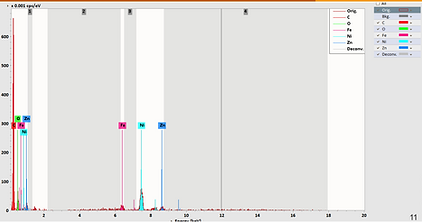
Structural Integrity Analysis of Critical Load-Bearing Hardware
Define
-
A backyard porch deck experienced a sudden and unexpected structural failure when a critical turnbuckle, responsible for maintaining static support, snapped after 18 years of service
-
The collapse posed an immediate safety hazard and demanded a precise understanding of its root cause
-
Complicating the investigation, the turnbuckle’s original specifications and maintenance history were entirely unavailable, leaving the failure origin shrouded in uncertainty
-
This scenario required a rigorous forensic approach, combining mechanical insight, materials analysis, and problem-solving under ambiguity


Goal
My objective was to uncover the root cause of the turnbuckle failure through a systematic, forensic engineering approach. I evaluated all plausible failure modes, including:
-
Stress corrosion cracking
-
Tensile overload
-
Manufacturing defects
-
Fatigue
The aim was to integrate hands-on experimental evidence with rigorous engineering analysis to pinpoint the true failure mechanism. This investigation sought not only to explain the incident but also to extract actionable insights that could guide safer, more resilient design strategies for future structural applications.
Approach
-
Initial Inspection & Data Collection: Conducted thorough visual and optical microscopy inspections of the fracture surfaces, documenting key features while gathering historical context from the deck owner.




-
Material Characterization: Used Energy-Dispersive X-ray Spectroscopy (EDS) to verify the turnbuckle’s aluminum-zinc alloy composition and assess any material anomalies.
-
Microstructural Analysis: Leveraged Scanning Electron Microscopy (SEM) to distinguish brittle versus ductile fracture features, locate crack origins, and benchmark against reference materials.
-
Hypothesis Testing: Systematically evaluated potential failure modes including stress corrosion, tensile overload, and manufacturing defects using a combination of quantitative calculations and direct observational evidence.
-
Fatigue Analysis: Determined critical crack sizes and stress intensity factors, linking observed ratchet marks and fracture patterns to cyclic loading, ultimately confirming fatigue as the root cause.


Impact
-
The investigation revealed that the turnbuckle failure resulted from fatigue crack propagation, culminating in a sudden fast fracture. Material choice (zinc-aluminum alloy) and load rating limitations were identified as key contributing factors.
-
This analysis underscored the critical importance of rigorous material evaluation, precise structural design, and proactive maintenance in preventing long-term fatigue failures. Through this work, I demonstrated advanced proficiency in failure analysis, microscopy techniques, and engineering judgment applied to real-world structural challenges.

Key Takeaways
Understanding how materials, geometry, and loading interact over time not only ensures reliable, high-performance mechanical systems but also provides critical insight into what went wrong which guides the next design iteration.
Systematic failure analysis and evidence-based decision-making allow engineers to predict weaknesses, mitigate risk, and create structures capable of performing safely under extreme operational demands.